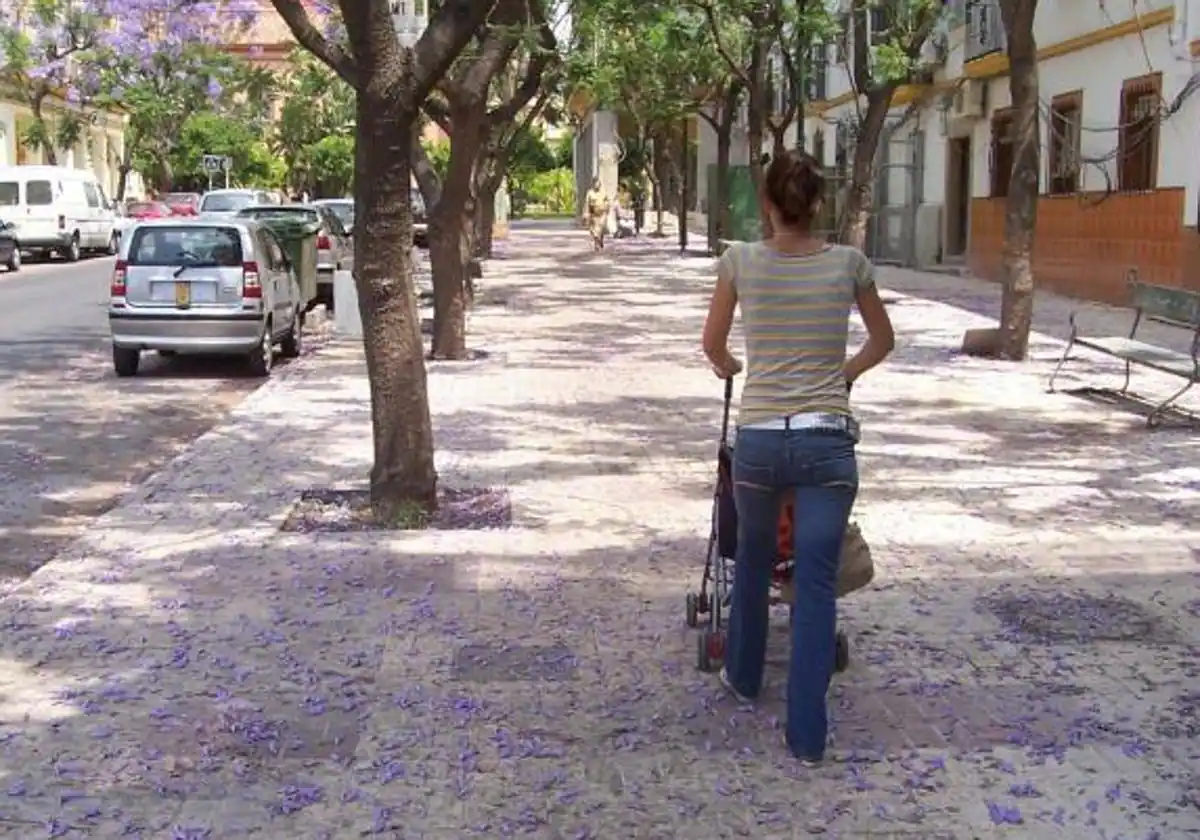Jacarandas, as beneficial and beautiful as they are messy
Purple blanket. It is one of the most CO2 absorbing species of tree, provides shade and its blossom is spectacular, but the sap it produces every May leaves a sticky mess
Francisco Jiménez
Viernes, 12 de mayo 2023, 12:04
The blossom from jacaranda trees produces spectacular images with its characteristic violet colour. Every May, the bright blossom permeates towns, cities and villages along the Costa del Sol and across Malaga province.
But their beauty comes at a price: the petals get stuck to pavements, street furniture, cars and anything else in their path due to the sticky substance that these trees secrete when they are attacked by aphids.
To try to protect themselves from this harmful insect, the jacaranda tree secretes this sap which eventually ends up sticking to the soles of shoes and on the bonnets and windscreens of vehicles parked in the street.
In Malaga, the city council has been trying for some time to tackle this sticky problem by introducing natural predators of these aphids, such as a tiny ladybird (adalia bipunctata) and small wasps.
However, these new insects need to start reproducing before the solution can really take effect and it isn't just the sap from the trees; the jacaranda blossom itself is also fleshy, which means it also contributes to the mess.
Anyone living on the Costa del Sol will know that the problem is not a new one. The jacarandas blossom towards the end of spring every year and, to a lesser extent, in autumn as well, as this tropical species blossoms twice a year.
Street cleaning
The Costa del Sol's street cleaning services are well aware of this problem. They agree that while the trees may be beautiful to look at this time of year, they cause cleaners headaches because as soon as they sweep one lot of petals up, a new lot will fall.
In Malaga, the cleaning service uses pressurised water in addition to regular cleaning in areas with the largest concentration of jacarandas, of which there are over 4,000 spread throughout the city.
In total there are 60 work units deployed across Malaga city, each of which spends a good part of the day trying to get rid of the sticky purple stains.
So if they are so dirty, why are there so many of them? Basically because the jacaranda is one of the three top carbon-dioxide-absorbing species of tree, along with the melia and acacia.
According to a natural CO2 sinks study carried out by the University of Seville, in a 100-metre long street, 10 jacarandas can absorb the gases emitted by 1,400 cars.
Carbon dioxide
According to Malaga city hall's parks and gardens department, each jacaranda absorbs more than a tonne of carbon dioxide a year, so despite the inconvenience it may cause, its benefits are much greater.
However, the only jacarandas that have been planted in recent years (except for the replacement of some that form part of an existing row) have been in parks because they cause less inconvenience and can be even more eye-catching.
Another advantage is that the trees grow quickly, provide much-needed shade in hot weather and, as they are deciduous, in winter they let in a lot of light.
Some places are replacing their jacarandas with palm trees, but they are not an ideal swap as they are neither as aesthetically pleasing as jacarandas nor do they provide as much shade, according to a botanist and professor of Environmental Sciences at Malaga University.
This department has been carrying out research to look into ways to rid the jacarandas of aphids naturally and therefore help with the issue of the sticky sap.



